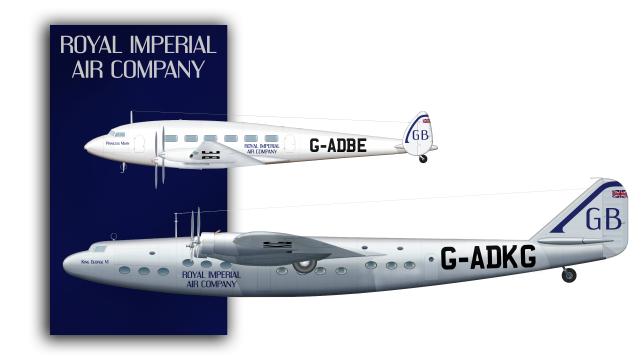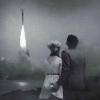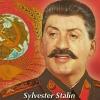Getting Big | 1938
- Owner: POTKC (View all images and albums)
- Uploaded: Oct 19 2018 06:37 PM
- Views: 2,264
- Album Royal Airways
Templates from wbairliner.com, edited by POTKC. Liveries © POTKC 2018, reproduction or use not permitted without written and explicit consent.

(TOP)
Airline - Royal Imperial Air Company
Aircraft - DeHavilland DH.91 Albatross | G-ADBE
Delivered to the Royal Imperial Air Company, 1938
Crashed in Glasgow, 1941
Livery - Standard 1919
Country - Great Britain
(BOTTOM)
Airline - Royal Imperial Air Company
Aircraft - Armstrong Whitworth AW.27 Ensign | G-ADKG
Delivered to the Royal Imperial Air Company, 1938
Transferred to the Royal Air Force, 1940
Returned to the Royal Imperial Air Company, 1945
Stored at London Croydon Airport, 1955
Scrapped at London Croydon Airport, 1955
Livery - Standard 1919
Country - Great Britain
In 1938, the Royal Imperial Air Company acquired two new aircraft types - the DeHavilland Albatross and the Armstrong Whitworth Ensign. The Albatross was used mostly on regional flights within western Europe. Often referred to as one of the most beautiful aircraft ever built (something that I personally agree with), the DH.91 carried 22 passengers at the blistering speed of 340km/h, much faster than most other aircraft of the time. Its four Gipsy Twelve engines - air-cooled V12s, as opposed to the massive radial powerplants used on most early-1930s airliners - gave the aircraft its impressive performance while keeping the cabin quieter than any aircraft previously operated by RIAC. Because of a variety of very sad circumstances, all seven aircraft of the type were destroyed within seven years of it entering service - a tremendous loss for humanity.
The second type that joined the Royal Imperial Air Company's fleet in 1938 was the Armstrong Whitworth AW.27 Ensign. The largest aircraft in the world at the time, it was much more spacious and powerful than the Albatross, and possessed a vastly greater range, but was somewhat slower. Speed was not of the essence on the long-range routes it was designed to serve, however - the focus was, instead, on luxury. Between 40 and 50 passengers could be carried by the Ensign on flights of up to eight hours long, during which the travellers would enjoy gourmet meal service in spacious salons or a good night's sleep in wide sleeping berths, depending on the time of day. The Ensign was truly the pinnacle of British air travel at the time, and would continue to be the most comfortable aircraft ever built, its luxury only being matched by the Boeing 377 Stratocruiser some time after WWII. The Armstrong Whitworth Ensign continued to fly for RIAC until 1955.
Very. Vintage.
I lovee it ad I want it ![]()
THESE ARE AMAZING!!!
Just stay with old liveries. Please.
For our own sanity.
THESE ARE AMAZING!!!
Thank you!
I lovee it ad I want it
I'm currently in the process of contacting the original creator of the images I edited to create the templates to see if I can publish them, if that is what you mean.
Woah. The floatyboi.
Nah the floatyboi was the Empire on the previous image, these are both wheelybois

 Sign In
Sign In Create Account
Create Account
















Whoa, vintage